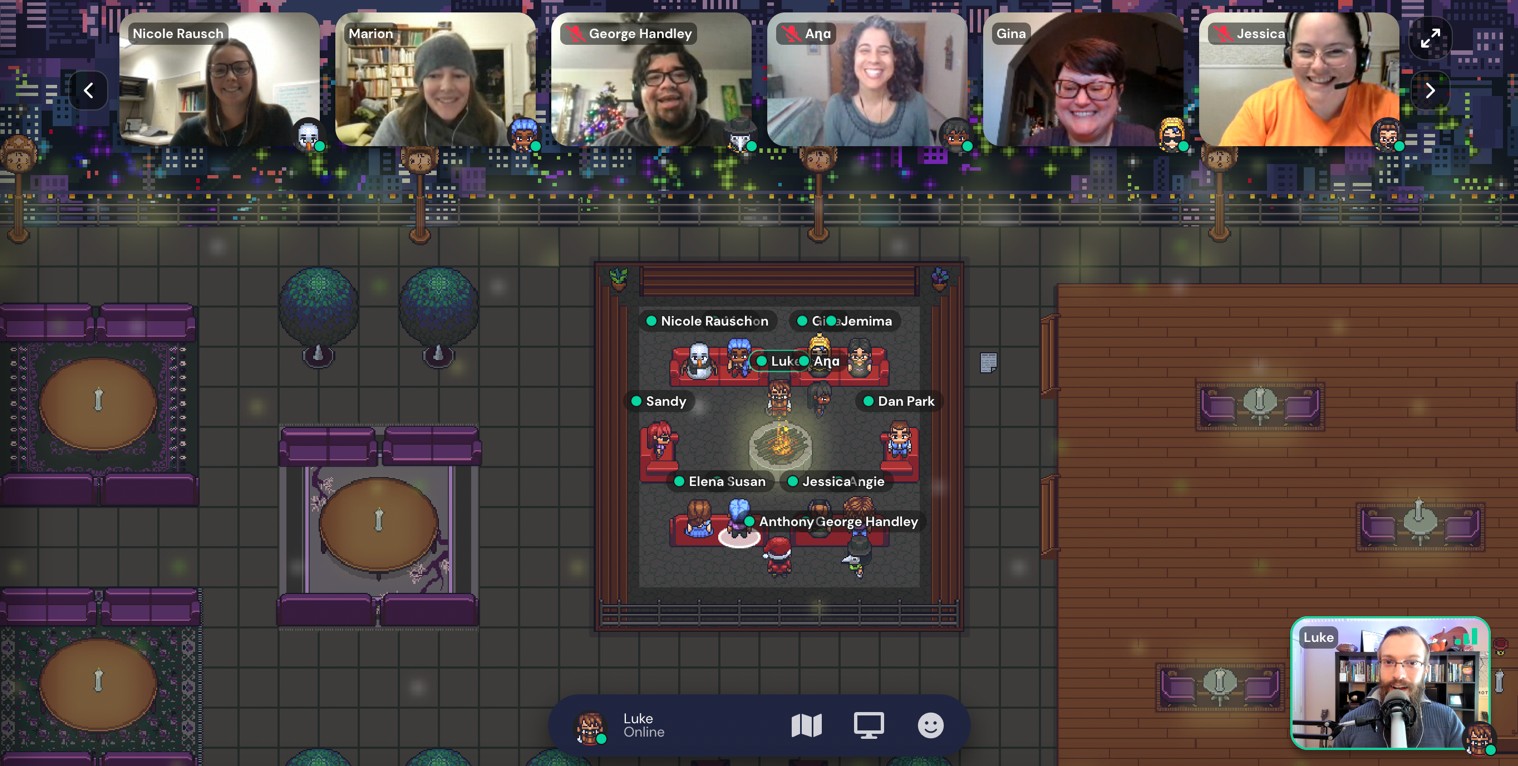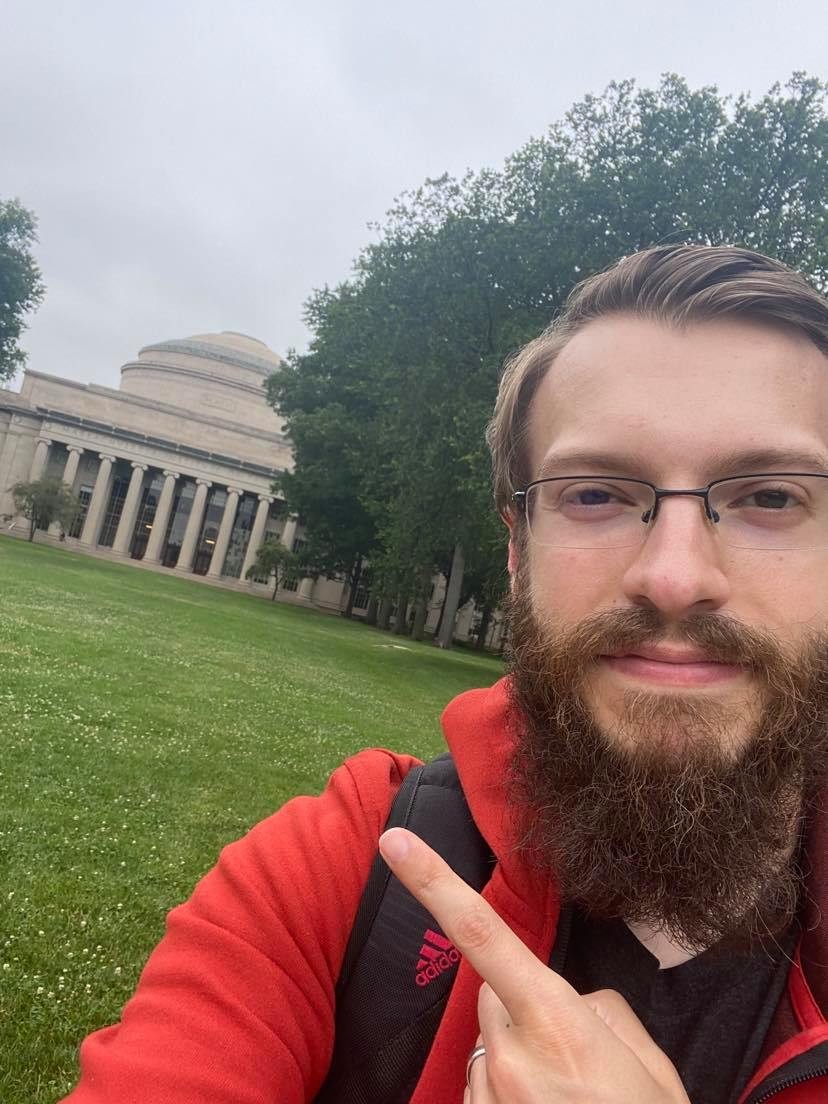Alright – so today we’ve got the honor of introducing you to Luke Hobson. We think you’ll enjoy our conversation, we’ve shared it below.
Hi Luke, thanks for joining us today. Let’s kick things off with your mission – what is it and what’s the story behind why it’s your mission?
My mission has always been to help make the online learning experience meaningful and relevant for all students and learners. Growing up, I never saw the point in school and how what I was learning would help me in the real-world. I found myself being disinterested and constantly arguing with teachers about the classes. I completely gave up on caring and managed to fail out of high school. It was during this time frame that all of my attention was focused on music as I wanted to be a musician. My father found a high school that offered music classes and this completely changed my attitude about education. It was this turning point though that made me realize how education needs to be transparent and clear to students about why we are asking them to go through a process and how learning can transform their lives.
I never forgot about this moment in time and it created a new passion for wanting to work in education. Fast forward several years later, and my entire career is focused on designing online learning experiences and sharing what I’ve learned along the way. The most effective way I can think of to inspire change is by sharing what I know with aspiring instructional designers and current instructional designers. I’ve done this through a blog, podcast, YouTube channel, and a book. It’s been a wild ride, but I’m loving every minute of it.


Great, appreciate you sharing that with us. Before we ask you to share more of your insights, can you take a moment to introduce yourself and how you got to where you are today to our readers?
There are many people in my field who fell into instructional design by accident. My story is a bit different though. Back in 2013, I was an online academic advisor at Southern New Hampshire University (SNHU) and I witnessed firsthand the explosive growth of their online programs. While I was coaching my students through their online courses, I always thought it had to be the professors who were creating them. I realized that I didn’t understand the landscape of online higher education and I began to network with more and more people. One day, I happened to meet a colleague who was an instructional designer. I asked him what he did for a living and he said that he was the one who designed the online courses I was helping my students through. It stopped me dead in my tracks as I asked, “You get paid for creating courses?!” Sure enough, it was indeed a real job and after that conversation, I knew I wanted to be an instructional designer.
After applying for what felt like a thousand positions, I was finally offered my first job as an instructional designer at Northeastern University. I was able to combine my background in graphic design and education to design their online courses and programs. Afterwards, I accepted a role at MIT as their senior instructional design and program manager and I’m still there today.
While commuting to Boston by train each day, I found myself with a significant amount of down time. I used this time to continue networking with other people in higher education and eventually, I connected with many other instructional designers. We mainly connected in Facebook groups and I began to notice the same questions constantly popping up about instructional design. At first, I was responding to each question, and then I realized it would be much better to house all of the information under one site. I created a blog all about instructional design and sharing more about my own journey. Before long, the blog was reaching thousands of people and the demand was there to expand to more mediums. That’s how the podcast and the YouTube channel came to be. During this timeframe, the pandemic hit us, and all eyes turned to remote learning and emergency learning. Even though these aren’t the same as traditionally designed online courses, it did bring instructional design to mainstream media and my content certainly grew more popular. I was answering so many questions about the instructional design field that I figured it would be easier to put all of my thoughts in a book. That’s when I wrote What I Wish I Knew Before Becoming an Instructional Designer. The book lead to a demand to make my own courses for instructional designers to take and it has been an absolute blast.
What I’m most proud of is hearing from readers, subscribers, and viewers about how my content helped them. Maybe it was helping someone to transition into an instructional design position. Or maybe it was to inspire a designer to try something new with their online courses. You’ll never know the impact you’ve had on someone’s life until they reach out to you. That has been such a cool feeling to hear about how your voice is what they listen to when they go to walk their dog or commute to work each day. I’m so happy to hear that my ramblings about online learning and instructional design have made a difference.
What do you think helped you build your reputation within your market?
What I’ve been told by many of the folks who enjoy my content is that I present material in a way that’s like hanging out with a friend at a coffee shop. Something that drives me up a wall is how many barriers academia creates when trying to learn a new skill. We, as academics, can make topics so complicated and convoluted. It takes a PhD just to read a research paper and the average person isn’t going to follow along. I do my best to write and talk in a way that I won’t lose people or go over their heads. I want you to be able to grasp the concepts and if I speak with academic jargon, it’s pointless.
Also, just because I’m an instructor and that I’ve been an instructional designer for several years does not mean that I have all the answers. There are plenty of more intelligent people out there than me. I do my best to be transparent about my mistakes and I’m comfortable with being vulnerable. When I first started to share about my experiences, I heard from some people about how I must be a perfect designer because I work at MIT. I wanted to quickly squash that as I’m a human being and you can bet that I make plenty of mistakes. I’ve found that by sharing about my blunders, it’s help folks to take a deep breath and know that they aren’t alone in feeling overwhelmed.


Can you tell us about what’s worked well for you in terms of growing your clientele?
Without a doubt it’s being open to all forms of media. People enjoy content in different ways so why not meet them where they are? If you like to read, you can check out my blog. If you want to hold a physical product in your hand, you can order the book on Amazon. If you would rather listen to me while you are on a walk, you can download the podcast. If you would like to see my presentations, you can check out YouTube channel. I really do believe in trying to design for everybody and that means creating content in every way possible.
Contact Info:
- Website: https://drlukehobson.com/
- Facebook: https://www.facebook.com/groups/393570904994506
- Linkedin: https://www.linkedin.com/in/luke-hobson-edd-7a685622/
- Twitter: https://twitter.com/drlukehobson
- Youtube: https://www.youtube.com/c/DrLukeHobson
- Other: https://podcasts.apple.com/us/podcast/the-dr-luke-hobson-podcast/id1513942867


